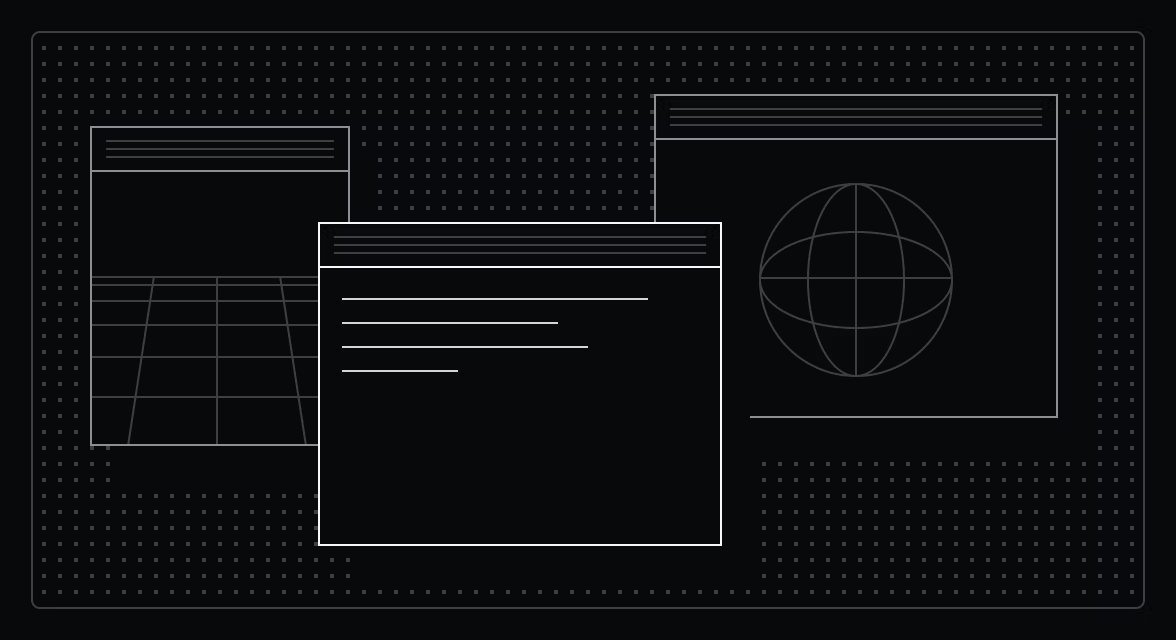Design for the AI age

"Where we're going, we don't need roads"
— Doc Brown, Back to the Future
For decades, interfaces have guided users along predefined roads. Think files and folders, buttons and menus, screens and flows. These familiar structures organize information and provide the comfort of knowing where you are and what's possible.
This understanding of interfaces has shaped my perspective on design throughout my career, leading me to see design as largely deterministic. I could visualize how interactions would work. The sequence when a user clicks a button, how information appears, how it adapts to different screens. It's dynamic, but predictable. I could visualize the user's journey and think about how to improve it.
That changes with AI and LLMs.
After ChatGPT's release, the chat interface quickly became the "AI native" standard. This makes sense on the surface – LLMs output text, and chat interfaces are familiar. Language itself is a powerful interface that removes traditional UI barriers. You simply have a conversation. But although useful for some tasks, they aren’t optimal for specific use cases.
Prompting is essentially like writing a spec, sometimes it's hard to articulate exactly what you want and ultimately control the outcome. Two people looking for the same thing might get wildly different results just based on how they asked for it, which creates an unprecedented level of dynamism within the product.
This shift from deterministic traditional UI to something more unbridled raises a challenge for designers: with no predictable journeys to optimize, how do you create consistent, high-quality experiences?
Form follows function
The role of design is to bring form around the function. Form acts as a way to set the context – like the way an axe looks and feels in your hand, you get an immediate sense of its purpose.
The design itself establishes this context for both the user and the system. By managing inputs and outputs along structured forms, you minimize the cognitive load required to successfully engage with the product, and minimize the variance in outcomes from that usage.
Without form, function gets lost. Unbounded AI, much like a river without banks, becomes powerful but directionless. Designers need to build the banks and bring shape to the direction of AI’s potential. But we face a fundamental tension in that AI sort of breaks our usual way of designing things, working back from function, and shaping the form.
Because we don’t yet fully understand what AI can do, trying to shape the form with unknown function feels a bit like trying to build a bridge over a foggy chasm, without a clear view of the other side. We’re likely going to have to reinvent our design processes – working forward to understand capabilities, rather than backwards from user needs.
Our attempts so far
A chat interface is a very weak and generic form. It’s a simple container for conversations back and forth, which is a start, but it isn’t precise, and it doesn’t effectively integrate with the rest of the tools and systems a team is using.
Some try to solve this by relying on 'artifacts', which are structured outputs from the AI (such as CSV files, JSON documents, or model binaries) which can be ported back into core workflows. These feel a bit like a band-aid. I believe a better option is to build a functional application with a more traditional UI and then complement it with AI functions.
Bringing function to form
One way I visualize this relationship between the form of traditional UI and the function of AI is through the metaphor of a ‘workbench’. Just as a carpenter's workbench is familiar and purpose-built, providing an organized environment for tools and materials, a well-designed interface can create productive context for AI interactions. Rather than being a singular tool, the workbench serves as an environment that enhances the utility of other tools – including the ‘magic’ AI tools.
Software like Linear serves as this workbench. It provides structure, context, and a specialized environment for specific workflows. AI doesn’t replace the workbench, it's a powerful new tool to place on top of it.
As we move forward to more agentic workflows, the workbench becomes even more important. It will be the place where AI agents live and operate. The place where agents are deployed and managed. Where agents operate with clear guidelines and output is reviewed and approved. Humans stay in the loop, and design still has a massive role to visualize how to make this new world more approachable and understandable.
We need to move beyond the generic chat format and reconsider what users truly require for their specific workflows. Without a workbench, we risk wielding powerful tools in empty space.
